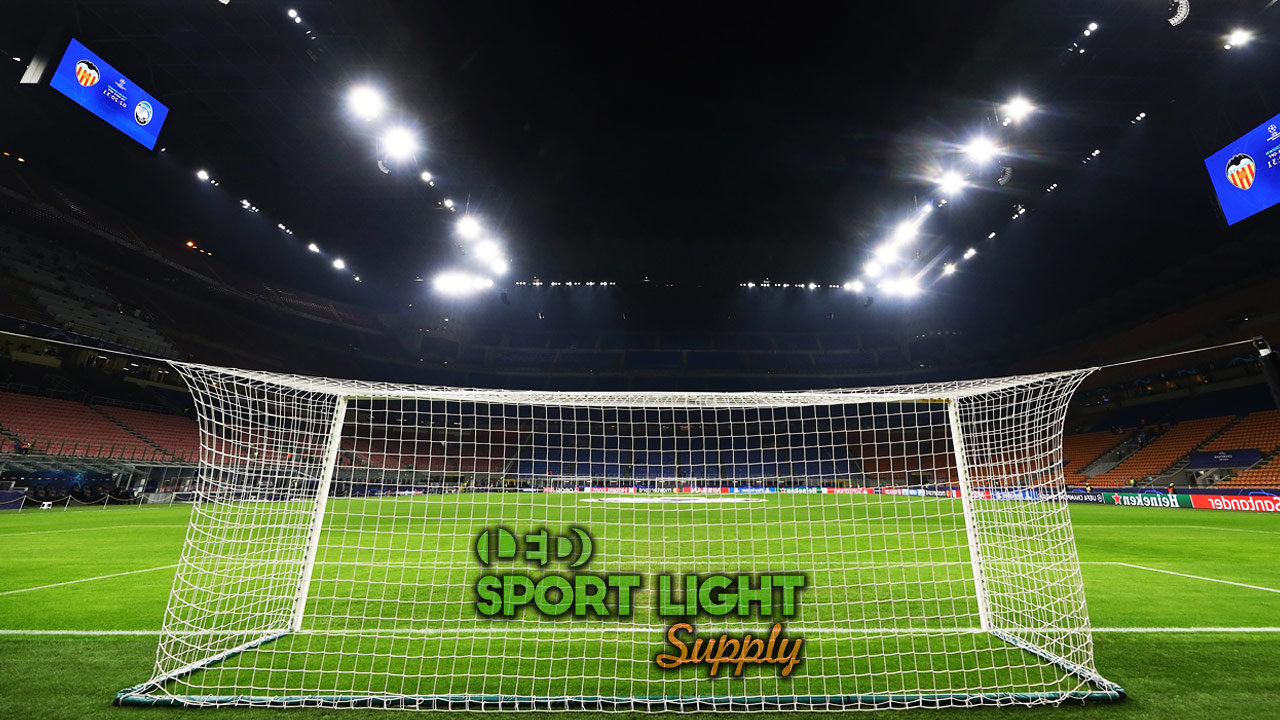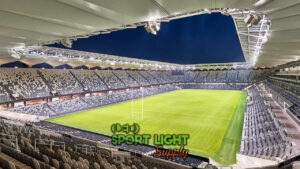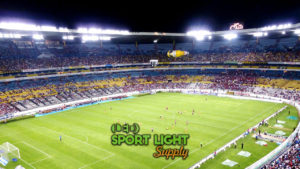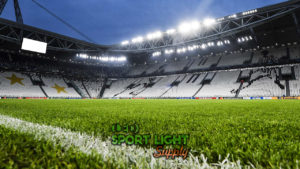The lights that are used in any football stadium are intended to improve visibility on the playing field. No matter what time of day where daytime light is not optimal, usage of stadium lights helps enhance the field for the athletes. Since every football stadium is designed differently and caters to large or small venues, these lights will all vary for each intended purpose.
The level of light that’s used also depends on the level of the profession that football is played. This will mean that the level of light that is used is a custom design to illuminate the playing field. It will also provide ambient lighting for spectator seating areas.
What kind of lights do outdoor football stadiums use?
This section will give you a better idea of how stadium lights are used both outdoor and indoors. The first detailed section will cover outdoor stadium lights and the second will cover indoor stadiums.
1. Flood lights
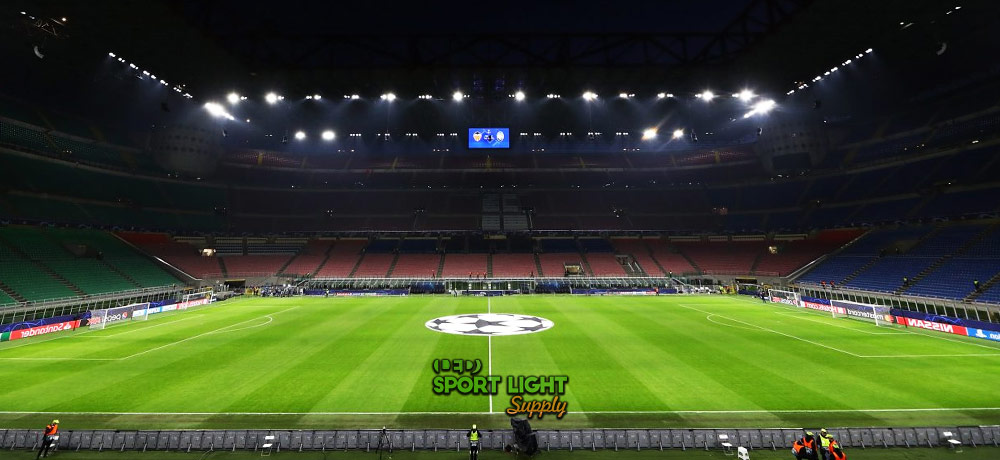
Flood lights are designed to have large beam angles that are intended for illuminating short-range areas of the football field. They are used as additional light intended to remove as many shadows that are cast by high mast lighting. Often referred to as fill-light’, these flood lights improve player visibility for the spectators and television cameras. It also aids an athlete on the field, so they can see more detail while they play the game.
Flood lights are placed at angles on the playing field, well above the ground and along each of the sidelines. They are carefully positioned so they don’t present blind spots due to glare or intensity.
2. Spot lights
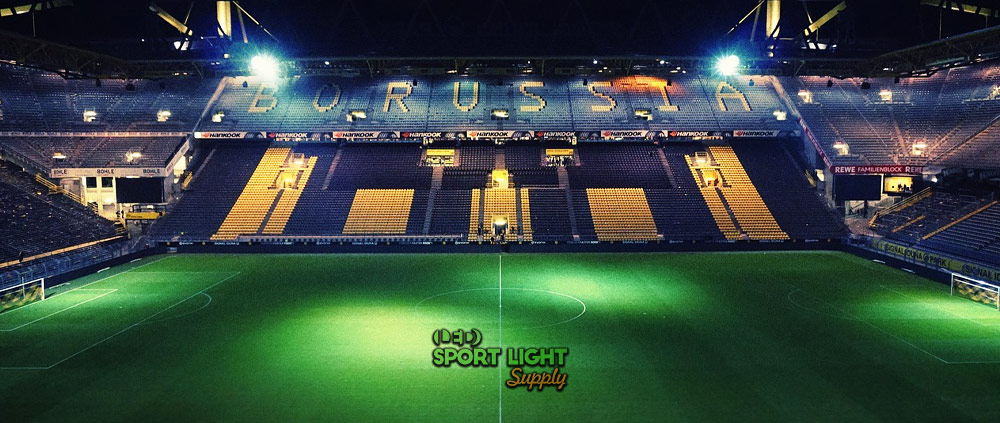
These are small beam angles, usually no more than 45 degrees that are concentrated for long-range illumination. Spot lights are used to illuminate a football field from longer distances and are designed to spread out over these great lengths. Since there are obvious disadvantages that include loss of light, these spotlights counter this problem. The amount of Lumens is increased using a mathematic calculation based on the distance involved.
This ensures that the light that does reach the field is the correct intensity for Lumen and Lux levels. It often takes the addition of flood lights to fill in gaps that are formed across sections of intersecting spot lights.
3. High mast lights
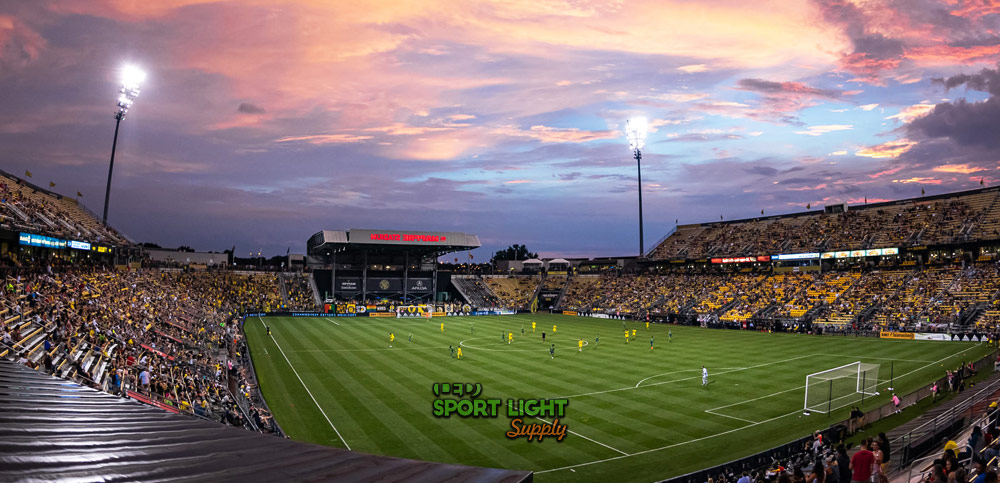
The height of high mast lights will differ greatly from field to field. The height difference also ranges up to 20 to 50 meters depending on the structural design of the stadium and level of competition. Higher levels of light are also required and will call for higher poles. If the football field is more professionally oriented and has more television coverage, the amount of light is increased dramatically.
Even the color temperature of the lights will be modified to be brighter and livelier to help stimulate the spectators and athletes.
What type of lights do indoor stadium or football field use?
1. High bay lights
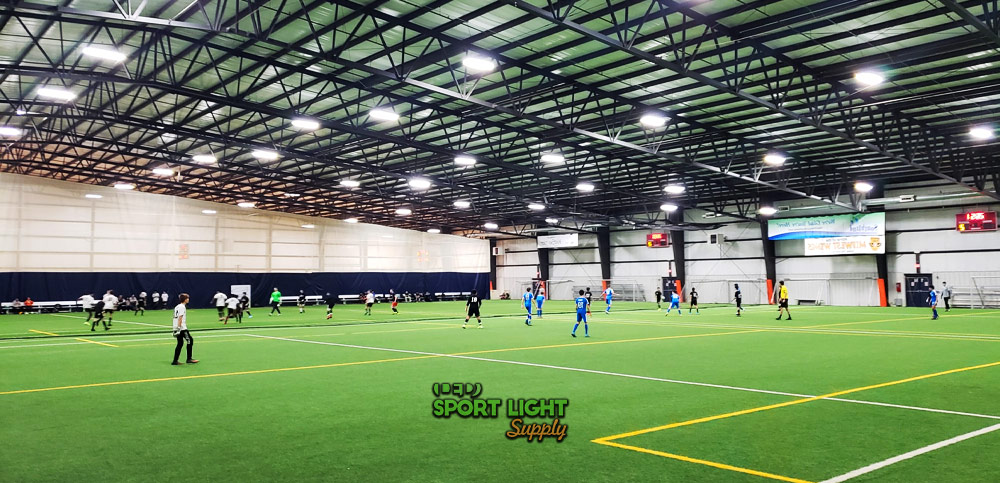
Using high bay lights inside an indoor arena will be hung from the ceiling rather than attached to poles. These lights can be configured into a grid pattern so the light coverage is more uniform. While you don’t see many covered football stadiums, the need for high bay lights is often used for other sports. These are related to football including rugby and soccer, and will utilize high bay lights as well.
Because the ceiling height for football fields needs to be very high, the light that is used for high bay lights all have specific degree angles. The longer a distance from the ceiling to the football field surface needs to be determined to narrow the light spectrum.
2. Panel lights
Panel lights can be used inside the indoor football field and are placed along the edges of the ceiling. Panel lights provide better illumination and reduce shadows that high bay lights may cause. You’ll see that most panel lights are larger panels of light and work best when they are mounted at the highest point. It’s more common that panel lights are attached to high mast poles, but may also be mounted to wall brackets.
Wall bracket panels allow the lights to be focused on parts of the football field that light-up football players more effectively. The athletes also get higher degrees of light and can play to their best advantage using these lights.
Types of football stadium lights
1. LED stadium lights
 More and more stadiums are switching over to a modern lighting solution. The advantage of LED lighting is primarily from the energy savings, but the benefits don’t stop there. Many advocates are praising the long life span that makes LED an economical sound choice. Unlike the other kind of lighting, there is no need to replace the LED diode unless it was poorly manufactured.
More and more stadiums are switching over to a modern lighting solution. The advantage of LED lighting is primarily from the energy savings, but the benefits don’t stop there. Many advocates are praising the long life span that makes LED an economical sound choice. Unlike the other kind of lighting, there is no need to replace the LED diode unless it was poorly manufactured.
Most LED sports lights can last up to 25 years without operating issues. Compare that with other types of light that only work 2-3 years before there is a problem.
2. Metal halide lights
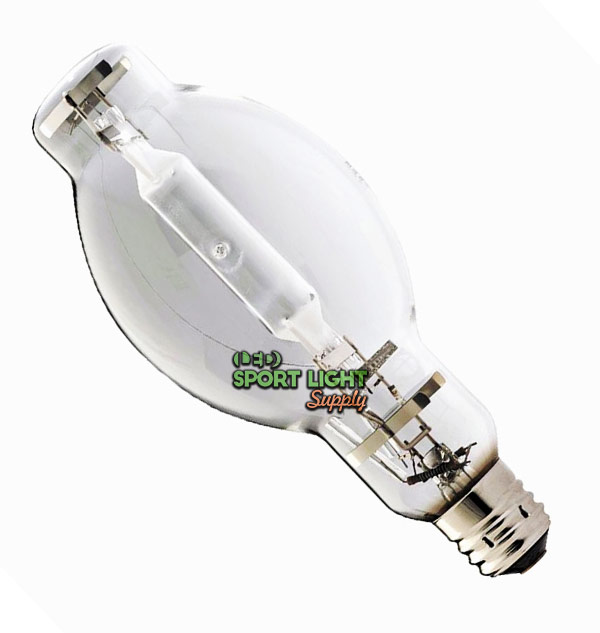 This is the old school lighting fixture that was a popular choice for sports light over 50 years ago. The problem with metal halide includes a 5-15 minute warm-up time. There are also ballast issues that require a continual flow of electricity to avoid premature light shut-off. The disadvantage to this will require that light is totally cool before it can be restarted. The downside to metal halides is that they shouldn’t be switched off.
This is the old school lighting fixture that was a popular choice for sports light over 50 years ago. The problem with metal halide includes a 5-15 minute warm-up time. There are also ballast issues that require a continual flow of electricity to avoid premature light shut-off. The disadvantage to this will require that light is totally cool before it can be restarted. The downside to metal halides is that they shouldn’t be switched off.
Not only is this a big drain on wattage, the upkeep costs or replacing the bulbs can be costly. Football stadiums will usually have a whole electrical crew standing by when big game events are happening. This only adds to the operating costs.
3. Halogen lights
Not only are halogen lights very hot and power-consuming, but they also don’t last very long at all. At the most, a halogen bulb has a 2-year lifespan but will start to dim after half of its life. The biggest complaint about halogen has always been the heat issues. This can be disastrous with lights that are pelted with rain. Cold water that hits the glass lens will shatter the lights and is a danger for even exploding.
On top of that, these shattering pieces can burn the skin because they have reached a temperature that can melt your skin.
4. HPS lights
High-pressure sodium lights are systematically being phased out. The reason was very simple to understand and has everything to do with UV light. This wavelength of light has the highest amount of UV light that is harmful to the skin. Sports lights using HPS can actually give you sunburns if you are sitting under them for a couple of hours. They also need a good ballast to prevent them from shutting off.
If these lamps crack, they can also give off a kind of UV radiation that is physically harmful to people. As these bulbs start to age, the color begins to degrade and gets progressively orange as they slowly burn out.
5. Mercury vapor
This is a unique form of light because it uses two separate tubes to produce the light. The inner tube onside is producing a lot of heat however an outer tube prevents much of that heat from escaping. The reason these lights are bad for sports lighting is that it can be toxic. This is all due to the mercury inside of the tube, and there are rules on how these bulbs are thrown away. These tubes are also being phased out in favor of LED lighting.
It also has an issue with UV radiation that can come through in a form of UV light. The health risks involved can range from sunburns to ultraviolet poisoning.
LED stadium lights – The trend
In recent years, there has been a growing trend to switch over to LED lighting. Many of the phase-out programs are gearing their effort to replace older forms of wasteful stadium light. Well, this is where LED has been a great innovation for energy-savings, longer lifespan, and lower wattage used. There are very few flicker problems and when football lights are used since LED has such rapid firing semiconductors.
The light intensity makes using LED more ideal for broadcasting television and images for 8K TV is truly incredible. Because these lights can be switched on and off without delay, there are never lighting issues with losing LED light. There is also no warm-up time and they can be turned on exactly as they’re intended to. It’s no wonder why it’s worth the effort to invest in LED lighting for your football stadium for all the benefits that are included.
Not only are the monthly costs reduced, but the maintenance is also reduced to next to nothing. These lights also have the advantage of controlling Kelvin temperature that can be applied to the level of football you need. LED lights can also support being dimmed at any point to reduce the amount of light for practice gaming.

